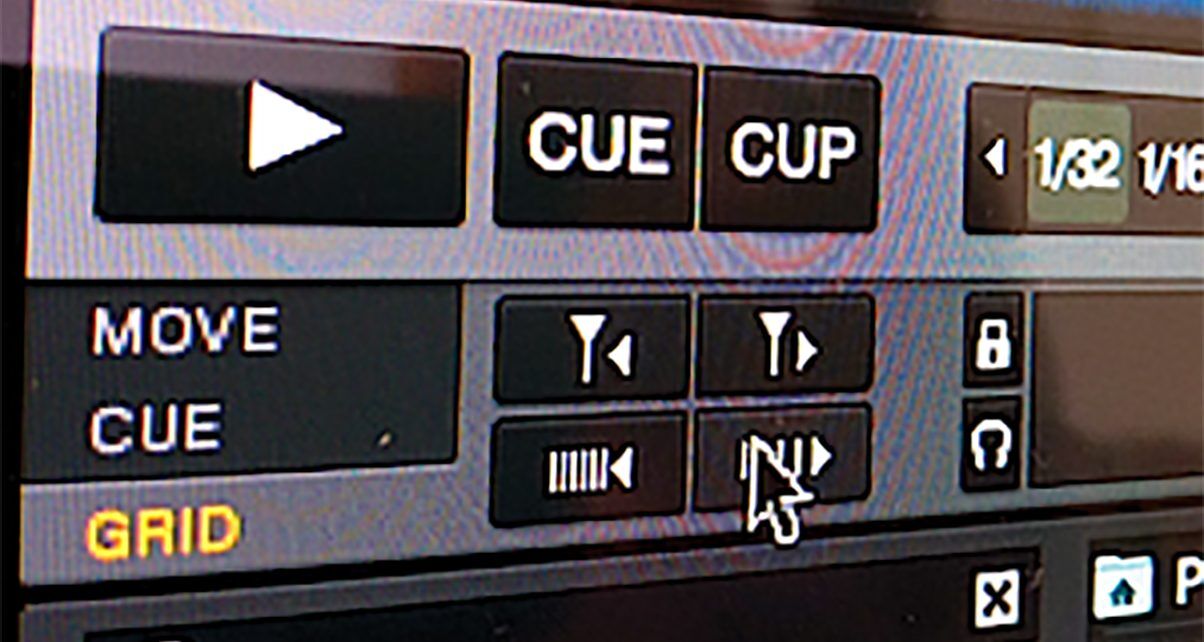No one likes doing homework, but for the digital DJ, putting in some time to beatgrid your tracks properly and ahead of time can give you more room to get creative with your set on the night.
Old school DJs used to spend years learning to beatmatch intuitively; if you’re going to be using that “sync” button instead, then the trade-off is diligently preparation. So here are my top ten tips for perfecting beatgridding:
10 Tips For Perfect Beatgridding
- Don’t assume your software’s auto-gridding function will always work – Four-to-the-floor (ie house, techno… ) generally presents fewer challenges, but more syncopated beat patterns or complex tracks are worth doing manually
- Treat beatgridding like laundry – It’s unlikely you’ll be doing it every day but at the same time, don’t let it mount up. Beatgridding can also be a good way to get to know your new tracks, and that’s not going to happen if you have 65 to knock out in an evening!
- Be confident that you will grid quicker, quickly – Don’t walk away because you can’t face the prospect of spending the next two years struggling with gridding! Beatgridding your first tracks can be frustrating and time-consuming, but many people end up being able to grid a track in seconds
- Check your software’s initial take on the BPM – If your software is telling you that the BPM of your latest drum and bass dubplate is 85, you may just need to double the BPM using the X2 button. (If your software were to tell you that the same dubplate is 120BPM – you know it’s totally out and you will have to start from scratch)
- If in doubt, tap it out – Assuming you weren’t born with the music timing of soup, the TAP function in your software will get you surprisingly close to (if not exactly on) the correct BPM. Good for that drum and bass track that your software was telling was 120BPM…
- Find your “control” tracks – You already have tracks that you know have spot-on grids. When you think you have got your target track beatgridded (or at least close), mix it with the control track to confirm the grid is set correctly
- Use the phase meter or parallel waveforms – You may need to manually tweak the target track to get it to mix with the control track we just talked about. Once the mix is locked-in, check how far the phase meter (Traktor) or lined-up transients in your parallel waveforms (most other software) have moved and use the grid move buttons to set the meter back to the middle. If your BPM is correct, the grid should now be set
[ad#Mid-article ad 468×60] - Lock the BPM – Once your grid is set correctly, select the lock icon if your software has it, to ensure the grid information can’t be inadvertently overwritten
- Know that not everything will grid – Some tracks just won’t grid properly in most DJ software. Older tracks, tracks with live drumming and vinyl rips are just some examples of the kinds of tunes that you might not be able to drop a grid on. Platforms like Ableton Live and Serato ITCH have “elastic beatgrids” or “warping” capability that allows the grid to shift in line with the tempo, but other major DJ software like Traktor still doesn’t. (There are workarounds for some of these cases but that’s a different story for a different day)
- Remember – you are not a bad person for using grids or sync – If you can rock your audience, that’s all that matters. Don’t worry about what other DJs think
It’s not always necessary to beatgrid, but…
Of course, some DJs – especially those who’ve come from vinyl or CDJ backgrounds – are happy to match the BPMs live and then ride the tempo controls and nudge the jogs as they go, just like they are used to with analogue equipment. For those DJs, beatgridding is something they’ll probably never choose to do. It’s one of the benefits of knowing how to beatmatch manually.
But even then, once you start dropping three or four tunes together and adding effects, samples and so on, tightly beatgridded loops are kind of essential. So whatever combination of digital equipment and software you use, if you beatmix, it’s a great idea to know how to beatgrid well.
Do you diligently beatgrid your tunes? Do you sometimes do it but other times just hope syncing gets it right on the night? Or do you never bother and just beatmix manually? Let us know your choices and challenges when it comes to beatgridding in the comments below.


